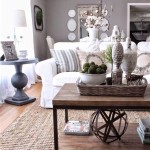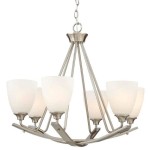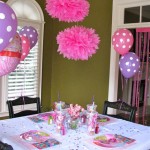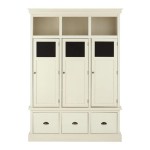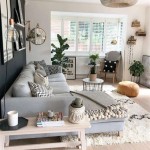Home Decor Presents: A Comprehensive Guide to Enhancing Your Living Space
Home decor encompasses the art and science of enhancing the aesthetics and functionality of a living space. From furniture arrangements and color palettes to lighting and accessories, every element plays a role in creating a cohesive and inviting environment. As a homeowner or renter, understanding home decor principles can empower you to transform your dwelling into a haven that reflects your personal style, inspires creativity, and promotes well-being.
Understanding Design Principles
Before diving into specific decor elements, it's crucial to grasp fundamental design principles that serve as the foundation for any successful home decor project. These principles act as guiding lights, ensuring that your choices harmonize and create a balanced and visually pleasing space. Key principles include:
- Balance: Achieving an equilibrium between visual weight and elements on either side of a central point. This can be symmetrical (mirrored elements) or asymmetrical (differing elements that create equal visual weight).
- Emphasis: Creating a focal point that draws attention. This might be a striking artwork, a dramatic fireplace, or a statement furniture piece.
- Rhythm: Establishing a flow and movement within the space through repetition, contrast, or gradual changes.
- Harmony: Ensuring that all elements work together cohesively, creating a unified aesthetic that reflects the overall design intention.
- Unity: Creating a sense of wholeness and connection between all elements, preventing the space from feeling disjointed.
By applying these principles, you can build a foundation for making deliberate and impactful decor choices that create a cohesive and inviting atmosphere.
Essential Elements of Home Decor
Once you understand the guiding principles, you can begin incorporating specific elements to bring your vision to life. These elements work together to create the ambiance and functionality you desire in your home:
1. Furniture: The Foundation of Functionality and Style
Furniture forms the backbone of any living space, defining the layout and purpose of each area. Careful consideration of furniture choices is essential for both functionality and aesthetics. Factors to consider include:
- Function: Choose furniture that serves its intended purpose. For instance, consider the type of seating needed for a living room, the storage requirements of a bedroom, or the work surface needed in a home office.
- Size and Scale: Ensure furniture dimensions are appropriate for the space, avoiding overcrowding or making the room feel cramped.
- Style: Select furniture that complements the overall style of your home. From modern and contemporary to traditional and rustic, each style has its distinct characteristics and aesthetic appeal.
- Color and Materials: Opt for furniture with colors and materials that harmonize with the rest of the decor and create a cohesive atmosphere.
2. Color Schemes: Setting the Tone and Mood
Color plays a significant role in shaping the mood and ambiance of a space. A well-chosen color scheme can enhance the feeling of spaciousness, evoke emotions, and create a sense of harmony. Consider the following:
- Color Psychology: Understand the emotional associations linked to different colors. For example, blue promotes calmness, yellow evokes happiness, and green symbolizes nature and tranquility.
- Light and Dark: Darker colors tend to create intimacy and coziness, while lighter colors can make a space feel more open and airy.
- Accent Colors: Introduce pops of vibrant or contrasting colors to add visual interest and break up monotony.
- Color Trends: Stay informed about current color trends, but personalize them according to your preferences and existing decor.
3. Lighting: Enhancing Ambiance and Functionality
Lighting is an often-overlooked but crucial aspect of home decor. It has the power to dramatically alter the feel of a space, influencing mood, functionality, and overall aesthetics. Consider:
- Natural Light: Maximize natural light through strategic window placements and by minimizing obstructions like heavy curtains.
- Artificial Light: Use a combination of ambient, task, and accent lighting to create a balanced and functional illumination. Ambient lighting provides general illumination, task lighting supports specific activities like reading or cooking, and accent lighting highlights specific features.
- Layered Lighting: Combine different lighting types to achieve depth and dimension. For example, use overhead lighting for general illumination, table lamps for reading, and spotlights to highlight artworks.
- Light Temperature: Warm white light (yellowish hue) is ideal for creating a cozy atmosphere, while cool white light (bluish hue) is more stimulating and functional.
4. Textiles and Fabrics: Adding Texture and Comfort
Textiles and fabrics add warmth, personality, and tactile appeal to any space. They can create visual interest, define areas, and provide comfort. Key considerations include:
- Curtains and Drapes: These can control light, add privacy, and enhance the overall style of the room. Choose colors and patterns that complement the furniture and wall colors.
- Rugs and Carpets: Rugs define areas, add warmth, and provide a soft surface for walking. Choose sizes and patterns that suit the space and create visual interest.
- Throws and Pillows: Add comfort and texture with throw blankets, pillows, and cushions. Use these to introduce pops of color, texture, or pattern.
- Upholstery: Fabrics used for upholstery play a significant role in defining the style and comfort level of furniture. Consider durability, stain resistance, and the overall feel you desire.
5. Accessories and Decor: Adding Personality and Focus
Accessories and decorative items are the finishing touches that personalize a space and add a touch of personality. They can create focal points, inject color, and reflect your interests. Consider:
- Artwork: Paintings, prints, photographs, or even tapestries can add visual interest, evoke emotions, and create conversation starters.
- Mirrors: Strategically placed mirrors can reflect light, create the illusion of space, and add visual interest.
- Plants: Incorporating greenery brings life, freshness, and a touch of nature to any space. Choose plants suited to the light conditions and your lifestyle.
- Vases and Bowls: These can house flowers or decorative elements, adding color and visual interest to a table or shelf.
- Candles and Scented Diffusers: These create a relaxing and inviting atmosphere, enhancing the sensory experience of your home.
Remember, home decor is a journey of personal expression and continuous evolution. Experiment, try new things, and let your unique style shine through. Remember that a well-decorated home is a sanctuary that reflects your personality and enhances your quality of life.

23 Best Home Decor Gifts 2025 Unique

31 Joyful Home Decor Gifts That Ll Make Staying In Sweeter Fashionista

32 Home Decor Gifts That Will Liven Up Any Space Fashionista

27 Best Home Decor Gifts Of 2025 For Every Aesthetic Today

26 Best Home Decor Gifts To Give In 2025

27 Best Home Decor Gifts Of 2025 For Every Aesthetic Today

The Best Home Decor Gifts Every Decorator Will Love

Home Decor Gifts Gift Sets Boxes H M

Home Decor Gifts Gift Sets Boxes H M

The 20 Best Home Decor Gifts Of 2025 Purewow
Related Posts
